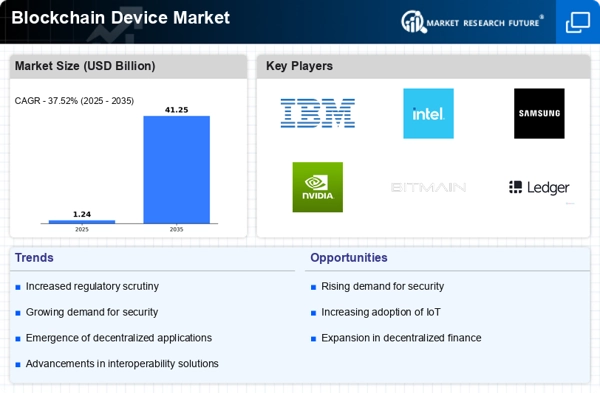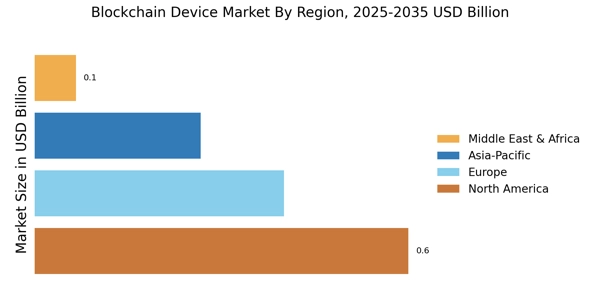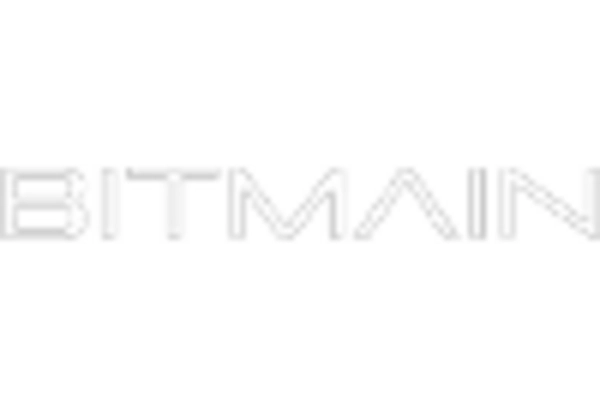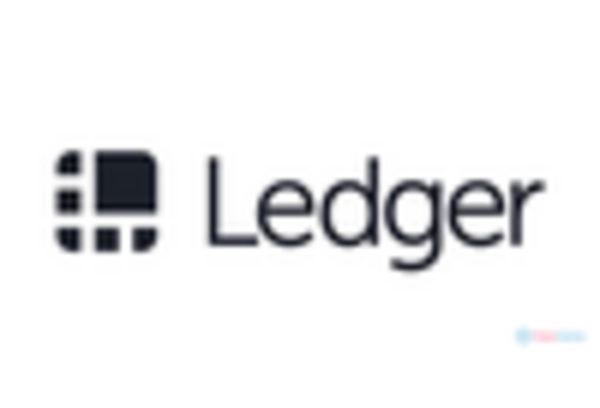The Blockchain Device Market is currently characterized by a dynamic competitive landscape, driven by rapid technological advancements and increasing adoption of blockchain solutions across various sectors. Key players such as IBM (US), Intel (US), and Ledger (FR) are strategically positioning themselves through innovation and partnerships, which collectively shape the competitive environment. IBM (US) focuses on integrating blockchain technology into enterprise solutions, while Intel (US) emphasizes hardware development for secure blockchain applications. Ledger (FR), on the other hand, is enhancing its hardware wallet offerings to cater to the growing demand for secure cryptocurrency storage, indicating a trend towards specialization in product offerings.
In terms of business tactics, companies are increasingly localizing manufacturing and optimizing supply chains to enhance efficiency and reduce costs. The market appears moderately fragmented, with a mix of established players and emerging startups. This fragmentation allows for diverse approaches to market entry and competition, as companies leverage their unique strengths to capture market share. The collective influence of these key players is significant, as they drive innovation and set industry standards, thereby shaping the overall market structure.
In August 2025, IBM (US) announced a strategic partnership with a leading financial institution to develop a blockchain-based payment system aimed at enhancing transaction security and efficiency. This move underscores IBM's commitment to leveraging its technological expertise to address real-world financial challenges, potentially positioning it as a leader in the financial blockchain sector. The partnership is likely to enhance IBM's credibility and expand its market reach, aligning with the growing trend of financial institutions adopting blockchain solutions.
In September 2025, Intel (US) unveiled a new line of processors specifically designed for blockchain applications, which are expected to improve transaction speeds and energy efficiency. This development is crucial as it addresses the increasing demand for high-performance computing in blockchain networks. By focusing on hardware innovation, Intel aims to solidify its position as a key player in the blockchain ecosystem, potentially attracting a broader customer base seeking advanced technological solutions.
In July 2025, Ledger (FR) launched a new security feature for its hardware wallets, which utilizes biometric authentication to enhance user security. This strategic enhancement reflects Ledger's proactive approach to addressing security concerns in the cryptocurrency space. By prioritizing user security, Ledger not only strengthens its product offering but also reinforces its brand reputation as a trusted provider in the blockchain device market, which is essential for maintaining competitive advantage.
As of October 2025, current competitive trends in the Blockchain Device Market are heavily influenced by digitalization, sustainability, and the integration of artificial intelligence. Strategic alliances among key players are increasingly shaping the landscape, fostering innovation and collaboration. Looking ahead, it appears that competitive differentiation will evolve from traditional price-based competition to a focus on innovation, technological advancements, and supply chain reliability. Companies that can effectively leverage these trends are likely to emerge as leaders in the rapidly evolving blockchain ecosystem.

















Leave a Comment